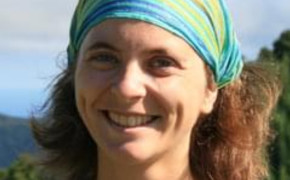It´s a new pedagogical tool focused on circular economy, waste prevention and environmental awareness. It´s used in schools for individual and teamwork.
Aragon schools have been working on environmental education for a few years, focusing on waste recycling through specific activities. To go further in a circular economy, the Aragon regional government has launched a project called “Erre que erre” for 9- and 10-year-old students and school workers. The project name means the three R’s (Reduce, Reuse, and Recycle).
The aim is to provide a new pedagogical tool to improve environmental knowledge and awareness by generating individual and teamwork habits.
Some main aspects were considered. The materials should transversely cover the different cv subjects (math, science, languages, etc.), and the whole school community could be involved. Teachers should be a key part of the project development, but not the only one. The materials should allow a gradual use: from a basic commitment level, by individual teachers, up to a maximum commitment level, including activities for office workers, school canteens, etc.
The project is organized with two main folders: the “blue” folder consists of activities and final projects for teachers and other school staff, and the “yellow” one of activities for students, classified as R1 (reduce), R2 (reuse), and R3 (recycle).Aragon Government leads the project through a partnership between DG Educational Innovation and Training and DG Climate Change and Environmental Education. The project was presented in November 2019 on a press act, and “Erre que erre” webpage was published with all the materials.
Resources needed
The working group consisted of four volunteer teachers. The group was supported by two technicians of the project staff. The cost for the environmental educators’ session was €800 and for the layout of the materials €1,800. The funding came from DG Climate Change and Environmental Education.
Evidence of success
More than 10 Aragon schools tested the materials before the kick-off. A survey was answered by nine schools, and the results showed a high degree of satisfaction. The rating scale was from 1 (low) to 5 (high). For example, the score for materials meeting the stated objectives of environmental awareness and education was 3,9, and the score for the usefulness of materials in the classroom was 3,8.
It is foreseen that more schools will join the project during the 2020/2021 course.
Difficulties encountered
The biggest challenge was to find volunteer teachers for the working group to elaborate materials. It required a high commitment, and there was no extra budget. The problem was solved when the DG Educational announced that it provides participants teachers official "bonuses / points" for their cv.
Potential for learning or transfer
These kinds of materials could be used at any school in Spain and abroad by adapting the individual sheets to the 9- and 10-year-old student content of the regional/country curriculum.
The key success points for an easy transfer are:
- Project materials can be used with a wide implementation scale, from individual basic level to the whole school -level.
- It was written and created by teachers instead of technicians, so they know what really works and what is interesting for the daily class.
- Many activities have already been implemented in European schools, for example, some activities have already been performed by European centres, and presented in the European Week for Waste Reduction (EWWR). For the future, it is foreseen to give a recognition (diploma) to the schools joining the project.
Please login to see the expert opinion of this good practice.
Tags: Circular economy, Education








